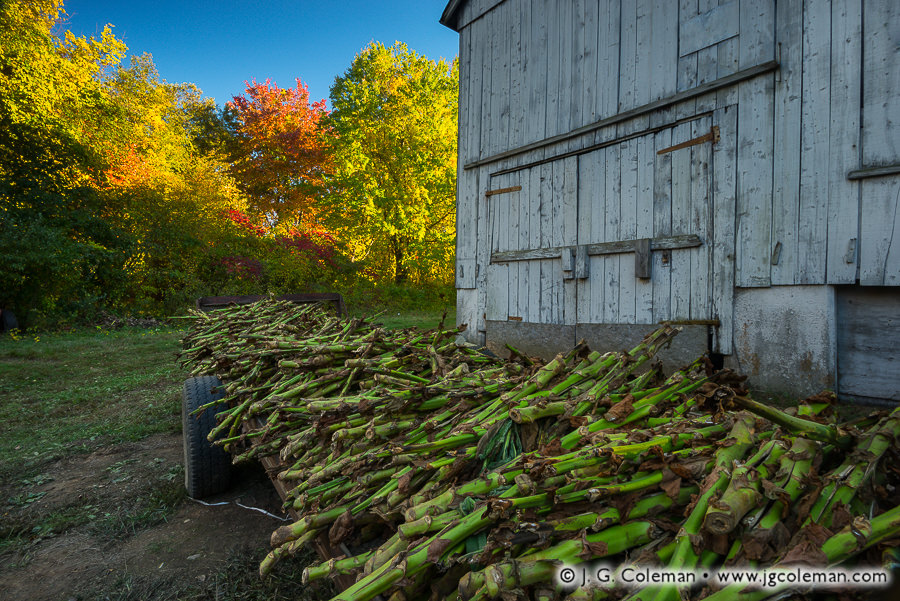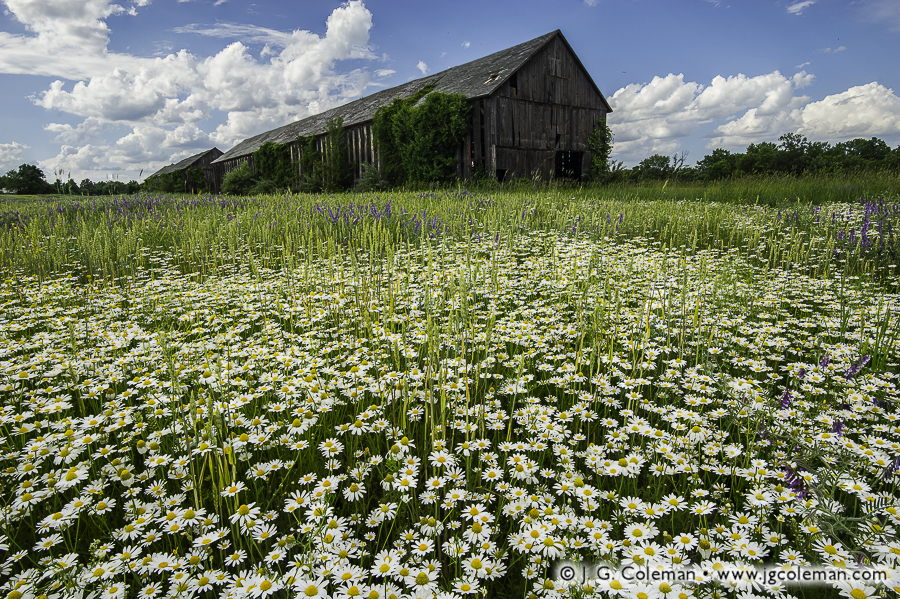
Windsor, Connecticut
© 2016 J. G. Coleman
Beside radiant autumn forests flush with an October palette, shadows embrace a rickety old tobacco shed freshly divested of its cured crop. Bare tobacco stalks, having been stripped of their leaves, lay piled upon a trailer ready to be carted away.
“Connecticut broadleaf tobacco is the Dangerfield of the cigar industry, a rumpled everyman tobacco that gets little respect,” wrote one journalist, kicking off a piece in a Cigar Aficionado magazine. And there’s truth to that assessment: broadleaf lives in the proverbial shadow of world-famous Connecticut shade tobacco, the two varieties forever vying for turf in the same fertile soils of the Connecticut Valley.
But while Connecticut broadleaf may not enjoy the same mystique as its shade-grown counterpart, its bold taste –described as a “heavy, muscular flavor” in the same Aficionado article– nonetheless earns it a spot in everything from machine-made Backwoods cigars to premium, hand-crafted maduros.
Purchase a Fine Art Print or Inquire About Licensing
Click here to visit my landing page for “Yankee Farmlands № 87” to buy a beautiful fine art print or inquire about licensing this image.
Want to See More?
Be sure to check out all of the work from my Yankee Farmlands project.



